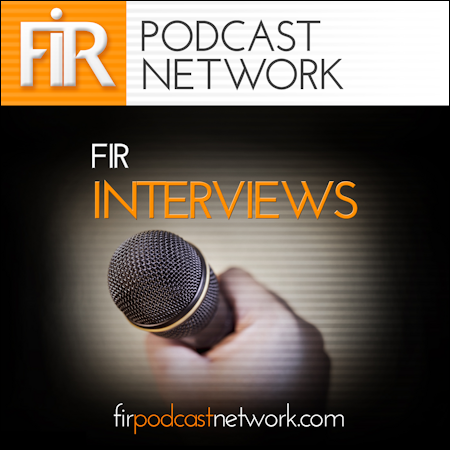
Last week, US venture capitalist and former Wall Street securities analyst Mary Meeker published her 2014 Internet Trends report that offers a deep-dive look into the trends, possibilities, probabilities, scope and scale of what the global connected world will look like in the coming few years.
It highlights trends to pay attention to, offering keen insights into what’s shaping this connected world:
- Key internet trends showing slowing internet user growth but strong smartphone, tablet and mobile data traffic growth as well as rapid growth in mobile advertising.
- Emerging positive efficiency trends in education and healthcare.
- High-level trends in messaging, communications, apps and services.
- Data behind the rapid growth in sensors, uploadable / findable / shareable data, data mining tools and pattern recognition.
- Context on the evolution of online video.
- Observations about online innovation in China.
At 164 pages, the slide deck is huge in its scope, and a challenge to decipher detailed meaning from just a deck without the benefit of hearing its creator talk you through it (she did that at the event last week for which she had prepared the deck).
Many others are filling the vacuum to do that. I have some thoughts, too, on a few areas from the 164 slides. I expand on that below, but if you want to just feast on all of Meeker’s data right now, here’s the deck:
Last year’s 2013 Internet Trends report was 117 pages, a slim volume by comparison. Indeed, I found it it a relatively simple matter to quickly glean and absorb insights from her deck to come up with what I saw in May 2013 as fifteen big trends for the evolving digital age.
A year later, how does the landscape look?
Here are three elements from the 2014 report that caught my attention (and imagination).
1. The rise of the mobile internet and the mobile devices that people want to use on the web are irresistible
The first aspect is the steady increase in shipments of smartphones (Wikipedia definition) worldwide since 2009 …

… and, in tandem, the rocketing growth in tablet (Wikipedia definition) shipments which overtook shipments of desktop and notebook PCs at the end of 2012/beginning of 2013.
And notice the massive uptick in tablet shipments that started at the end of the first quarter in 2013 …

… which makes it easy to understand in the context of the increasing numbers of people accessing content on the web via mobile devices like smartphones and tablets in May 2014 compared to the same time in 2013. While there isn’t a slide to show how connectivity – whether wired, wireless or cellular – is growing everywhere, these figures surely provide convincing evidence that that is what’s happening.
And global mobile usage average has almost doubled year on year, broadly reflecting the detail in each of the regions measured.

What these metrics say to me is this: if your presence on the web isn’t attuned to mobile – meaning, your site delivers the content people want and a great experience they expect when they come to you on their mobile devices – you’re in serious trouble.
2. The evolution of mobile apps
If using the web on a mobile device is increasing at a rapid pace as smartphones and tablets eclipse desktops and laptops, the requirement for mobile tools – apps – to let you do what you want on your mobile connected device is equally increasing at a rapid pace …

… where those apps are evolving into tools of genuine utility for the user, that let you do certain things very well.
So instead of being all things to all men, so to speak, many apps are shifting into specific use formats …

… that offer you context-aware interactions that, as TechCrunch notes, are purpose-built and informed by contextual signals like hardware sensors to interact with you in far more compelling ways than at present to maximize their usefulness to you.
3. Game changers for mobile TV and video consumption
Meeker’s slide deck has a great deal of content about the rise of personalized television where you the user define what the content is that you will watch and where you get it from (think of custom user preferencing in Netflix and Chromecast, as examples of this), and how you control it.
Consumers increasingly expect to watch TV content on their own terms.
I have a good example: watching a film that’s delivered from Netflix where I control its output with my smartphone or tablet to play on my digital smart television via wifi connection to the Chromecast dongle plugged in to the HDMI port on the TV. No traditional TV broadcaster in this transmission/consumption equation at all.

For me, this text slide summarizes very well the key aspects of all this, the “televisual game changers.”

And so, a small subset of the compelling content in Mary Meeker’s 164 pages of metrics and insights that make up her Internet Trends 2014 report. My focus has very much been on mobile. That’s by accident and by design – I didn’t plan this post to be like that, yet all the things that grabbed my attention that I’ve written about here are all to do with mobile.
Well, maybe not everything. Big data trends, for instance.

Do review the full deck and see what strikes you as compelling. And some of the other reporting on it is pretty good, adding to the ways in understanding what the report is about:
- The Most Important Insights From Mary Meeker’s 2014 Internet Trends Report – TechCrunch’s 54-slide gallery.
- Mary Meeker’s Internet trends 2014: The business technology takeaways – ZDNet says “Meeker’s key points aren’t exactly news flashes, but do highlight areas where enterprises – and their vendors – may be trailing. Here’s a look.”
- Mary Meeker’s 2014 internet trends report: all the slides plus highlights – Quartz.
Download the PDF report here: 2014 Internet Trends By Mary Meeker or view the deck on Slideshare.












12 responses to “Valuable insights in 2014 #InternetTrends report by Mary Meeker”
Hobson: Valuable insights in 2014 #InternetTrends report by Mary Meeker:
Last week, US venture capitalist and… http://t.co/A86PKPjzVG
#SocialMediaPost Valuable insights in 2014 #InternetTrends report by Mary Meeker:
Last week, US vent… http://t.co/ARBwBXljBV @Jangles
Valuable insights in 2014 #InternetTrends report by Mary Meeker http://t.co/hp3VFMXCdW
Valuable insights in 2014 #InternetTrends report by Mary Meeker http://t.co/mMTOByvqHV
Valuable insights in 2014 #InternetTrends report by Mary Meeker http://t.co/ZrlqzK2vPa #PR
Valuable insights in 2014 #InternetTrends report by Mary Meeker http://t.co/17SkffbLUF #B2B
Valuable insights in 2014 #InternetTrends report by Mary Meeker http://t.co/G0IlqKdPrK
@jangles yes, but don’t you find it a little lacklustre this year?
RT @PRDailyNews: Valuable insights in 2014 #InternetTrends report by Mary Meeker http://t.co/ZrlqzK2vPa #PR
Interesting insights into 2014’s #InternetTrends http://t.co/XMoQZjNT7M #PR
RT @PRDailyNews: Valuable insights in 2014 #InternetTrends report by Mary Meeker http://t.co/ZrlqzK2vPa #PR
Valuable insights in 2014 #InternetTrends report by Mary Meeker via @jangles http://t.co/kGPlrVaiX7 #social #trends #mobile